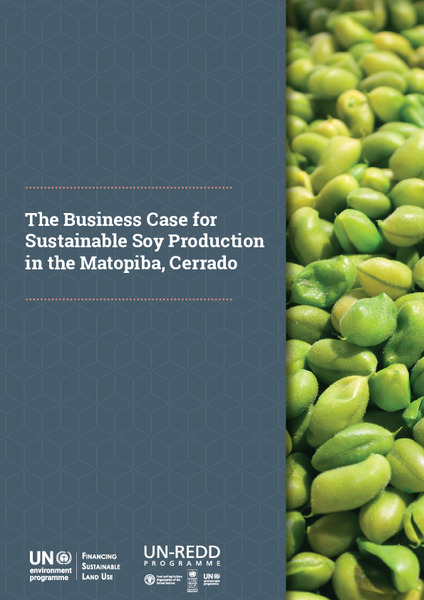The Business Case for Sustainable Soy Production in the Matopiba, Cerrado

Date
2024-02Author
United Nations Environment Programme
Food and Agriculture Organization of the United Nations
United Nations Development Programme
Citation Tool
Bibliographic Managers
RT Generic T1 The Business Case for Sustainable Soy Production in the Matopiba, Cerrado A1 United Nations Environment Programme, Food and Agriculture Organization of the United Nations, United Nations Development Programme YR 2024-02 LK https://wedocs.unep.org/20.500.11822/45020 PB AB TY - GEN T1 - The Business Case for Sustainable Soy Production in the Matopiba, Cerrado AU - United Nations Environment Programme, Food and Agriculture Organization of the United Nations, United Nations Development Programme Y1 - 2024-02 UR - https://wedocs.unep.org/20.500.11822/45020 PB - AB - @misc{20.500.11822_45020 author = {United Nations Environment Programme, Food and Agriculture Organization of the United Nations, United Nations Development Programme}, title = {The Business Case for Sustainable Soy Production in the Matopiba, Cerrado}, year = {2024-02}, abstract = {}, url = {https://wedocs.unep.org/20.500.11822/45020} } @misc{20.500.11822_45020 author = {United Nations Environment Programme, Food and Agriculture Organization of the United Nations, United Nations Development Programme}, title = {The Business Case for Sustainable Soy Production in the Matopiba, Cerrado}, year = {2024-02}, abstract = {}, url = {https://wedocs.unep.org/20.500.11822/45020} } TY - GEN T1 - The Business Case for Sustainable Soy Production in the Matopiba, Cerrado AU - United Nations Environment ProgrammeUnited Nations Environment Programme, Food and Agriculture Organization of the United NationsFood and Agriculture Organization of the United Nations, United Nations Development Programme UR - https://wedocs.unep.org/20.500.11822/45020 PB - AB -View/Open
Item Statistics
Display item statisticsMetadata
Show full item recordDescription
Much of the agricultural growth in Cerrado came from farmers migrating from southern Brazil, who brought with them both the capital and agricultural expertise necessary for opening-up the savannah landscape of the Cerrado. Even so, the new farms in the Cerrado tended to have low yields during the initial years, but once the soils had been treated for several years and soybean and corn or cotton grown on rotation, many of these farms later achieved some of the highest yields in the country.
Collections
Document Viewer
To read more, scroll down below.

